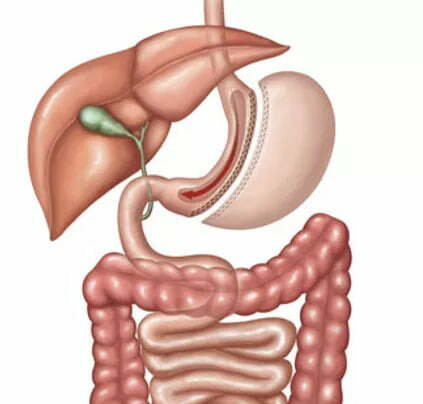- Currently the most commonly performed bariatric operation in the United States (61.4%) and at the Better Weigh Center (46%).
- Originally done as the first step of a “two step” operation in patients with a very high BMI. The idea was to do a sleeve gastrectomy to help the patient lose some weight to make the “second step” (duodenal switch) safer. Some patients lost so much weight with the sleeve they didn’t need the “second step” so surgeons started doing the gastric sleeve as a “single step” procedure.
- Around 70-80% of the stomach is removed with this procedure. The part that is removed is the “stretchy” part of the stomach that expands to allow us to eat very large meals.
- Provides good hunger control and good portion control for the patient. The operation helps reduce the volume of food that a patient eats but it does not help with food selection (less likely to have “dumping syndrome” with sugar) so the patient must improve their food/liquid choices on their own.

- Produces moderate metabolic effects in the body (more than a band, less than a bypass).
- Patients should expect to lose around 60% of their extra weight (30% of body weight) after this operation.
- Not reversible! Once the stomach section is removed it can’t be put back in again.
- This is still a newer procedure so long-term results (>5-10 years after surgery) are still lacking. There is some concern that many years after a sleeve gastrectomy patients may be at higher risk to develop GERD (heartburn) and experience weight regain at higher rates than other bariatric operations, but we simply don’t know at this point.
- This operation can be converted to a gastric bypass, duodenal switch or SADI which leaves the patient weight loss surgery options in the future.
